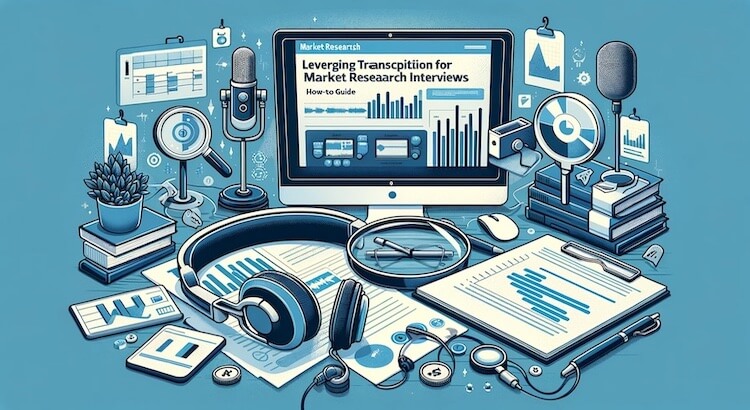How to Use Audio Transcription for Market Research Interviews: A Practical Guide
Effective market research depends on collecting and understanding real customer feedback. Interviews capture valuable opinions and stories. But the true value emerges when you accurately transcribe and review these conversations. Using quality transcription services, like GoTranscript, helps you convert audio into actionable insights—fast and efficiently. This guide shows you every step, from recording interviews to analyzing the results.
Step 1: Plan and Conduct Effective Market Research Interviews
- Prepare an Interview Guide: Write a clear list of questions and define your research goals before you start. This keeps the interview focused so you cover everything you need.
- Select a Quiet Environment: Record in a place without background noise. The fewer distractions your audio has, the more accurate your transcripts will be.
- Use Quality Equipment: Invest in a good microphone and a reliable recording device. Clear audio makes a big difference in getting correct transcripts.
Step 2: Choose the Right Transcription Service
- Compare Accuracy and Speed: Quality matters. Check user reviews and provider stats. For example, GoTranscript offers proven high accuracy and quick turnaround (2024).
- Check for Customization: Look for services that let you select verbatim transcripts or special formats. Verbatim records every detail, which is very useful for in-depth analysis.
- Review Privacy Protections: Market research can include sensitive information. Make sure your service uses secure data handling and provides confidentiality.
To get started, you can quickly order transcription or learn more about transcription services.
Step 3: Get Your Interviews Transcribed
- Upload and Label Files: When uploading, give each file a unique name. For example, use dates or interviewee initials to help with tracking.
- Use the Right Service Types: Consider automated transcription for fast results, or AI transcription subscriptions for regular usage. But remember, human proofreading boosts accuracy.
- Review the Transcript: After you receive your files, check them for mistakes. Watch out for tricky names or industry terms that might be misheard.
If needed, GoTranscript also offers transcription proofreading services.
Step 4: Analyze the Transcribed Data
- Organize Responses: Sort answers by topic, question, or respondent. A well-ordered document lets you spot trends more quickly.
-
Code Your Data: Assign short labels to responses. For example:
- “Likes product”
- “Wants improvement on delivery”
- “Mentions competitor”
- Extract Key Insights: Look for trends, unusual answers, or important direct quotes. These drive your next business decision.
Best Practices for Market Research Transcription
- Be Consistent: Ask each question in the same way to all participants. This helps you compare answers easily.
- Speak Clearly: Encourage everyone to speak slowly and clearly. This cuts back on errors in the transcript.
- Protect Confidentiality: Only use transcription services with strong privacy rules. Keeping participant info safe builds trust.
- Use Technology: AI and machine learning tools speed up transcription (2023). But always combine these with human reviews for the best accuracy.
- Make Insights Actionable: The main purpose is to turn what you learn into business actions. Use your findings to update your products, marketing, or customer service.
Extra Features: Accessibility and Global Reach
- Closed Captioning: For video interviews, add closed captions. This improves accessibility and supports viewers with hearing loss (CDC, 2022).
- Subtitles for Multilingual Research: Use subtitling services or audio translation to analyze interviews from different countries.
- Professional Translation: Need your interviews in another language? Rely on text translation services for accurate results.
Cost and Ordering Tips
- Transcription pricing varies based on turnaround, accuracy, and service type.
- Captioning services pricing is affordable for making your research more accessible.
- For a fast start, order transcription or order captions online in a few clicks.
Conclusion: Unlock Better Market Research with GoTranscript
Transcribing market research interviews lets your team work smarter. Clear, accurate transcripts save time and open up opportunities for deeper analysis. With easy-to-use solutions from GoTranscript—including human transcription, AI-powered transcripts, translation, and captioning—you can ensure your research is both efficient and insightful. Start transforming your interview data into decisions that help your business grow.



















 Verified Order
Verified Order